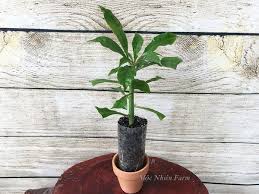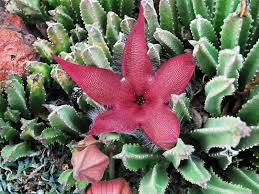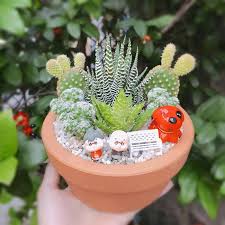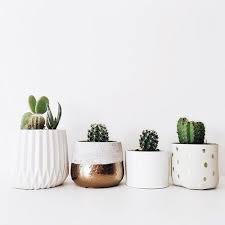The Crane in Chinese Art and Feng Shui: Symbolism, Meaning, and Significance
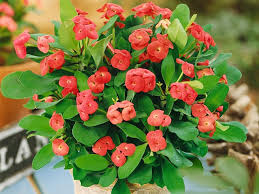
The crane, a graceful and majestic bird, has held a prominent place in Chinese culture for centuries, appearing in art, literature, mythology, and Feng Shui. It is not only admired for its beauty and elegance but also revered for its symbolic meanings of longevity, immortality, wisdom, and good fortune. In this article, we explore the deep significance of the crane in Chinese art and Feng Shui, examining its cultural importance, symbolism, and how it is used in various aspects of life to attract positive energy and blessings.
1. The Crane in Chinese Culture: An Overview
The crane, particularly the red-crowned crane, is often considered the immortal bird in Chinese mythology. It is an animal that embodies the qualities of immortality, purity, and elevated spirit. The crane is also deeply associated with longevity, being believed to live for a thousand years. As a result, this elegant bird frequently appears in Chinese art, literature, and mythology, symbolizing an ideal life full of wisdom, peace, and longevity.
In ancient times, the crane was believed to possess supernatural powers, capable of bringing good fortune, health, and happiness. It was often seen as a divine messenger, carrying blessings from the heavens. The bird’s quiet and graceful flight symbolized spiritual transcendence, while its long lifespan suggested an ability to overcome the trials of time.
The red-crowned crane holds a special place in Chinese culture, not only for its aesthetic beauty but for its deep connection with immortality and wisdom. It is often depicted in traditional Chinese art, including paintings, sculptures, and pottery, where it represents a bridge between the earthly and divine realms.
2. Symbolism of the Crane in Chinese Art
The crane’s significance in Chinese art extends far beyond its physical beauty. It has been a central motif in Chinese landscape paintings, porcelain, and calligraphy, where it embodies a variety of symbolic meanings:
A. Longevity and Immortality
The crane is most commonly associated with longevity and immortality in Chinese culture. In both traditional Chinese paintings and sculptures, the crane is often depicted alongside pine trees or peach blossoms, two other symbols of long life. This combination of motifs reinforces the idea of living a long, prosperous, and healthy life.
In art, the crane is also depicted standing on one leg, which symbolizes its enduring strength and longevity. In some paintings, the crane is shown with a tortoise, another symbol of longevity, highlighting the crane’s connection to the pursuit of eternal life.
B. Wisdom and Enlightenment
The crane is also associated with wisdom, often being depicted as a wise and noble bird in Chinese literature and art. Its long life and serene nature imply a deep understanding of the world and the ability to navigate life’s challenges with grace. The crane’s ability to soar high above the earth is seen as a metaphor for spiritual enlightenment, representing a path toward a higher understanding and connection to the divine.
In Chinese art, cranes often appear as companions of immortals, sages, and scholars, reinforcing the notion that wisdom and longevity are intertwined. Their delicate, poised movements are symbolic of a peaceful, thoughtful approach to life.
C. Harmony and Balance
The crane is a symbol of harmony and balance, which are core principles in both Chinese philosophy and Feng Shui. It is often depicted alongside other creatures like turtles or lotus flowers, which also embody these ideals. The crane’s graceful flight and posture suggest a harmonious balance between nature and the cosmos, making it a powerful symbol in Chinese art and design.
3. The Crane in Feng Shui: A Symbol of Good Fortune
In Feng Shui, the crane is considered an important symbol for attracting positive energy and ensuring good fortune. The bird is often placed in homes or businesses to promote a long life, peaceful relationships, and spiritual growth. Below, we explore the different ways the crane is used in Feng Shui to enhance various aspects of life:
A. Crane as a Symbol of Longevity
As in art, the crane in Feng Shui is strongly linked with longevity. In many Feng Shui practices, placing a crane figurine in the east or south-east corner of the home is said to attract health and long life. The east is particularly associated with the Wood element, which governs growth, vitality, and health, while the south-east is linked to prosperity. Therefore, positioning a crane in these areas is believed to enhance well-being and attract long-lasting vitality.
For those seeking to live a longer, healthier life, incorporating crane symbols into the home, such as crane sculptures or paintings, is a popular Feng Shui practice. It is especially beneficial for the elderly, as it is thought to create an environment that supports good health and longevity.
B. Crane as a Symbol of Harmony and Family Unity
The crane is also a symbol of family unity and harmony in Feng Shui. In marital bliss or family relationships, the crane represents balance and mutual understanding. A pair of cranes is often used in Feng Shui to strengthen relationships and ensure peace within the family. It is believed that these birds promote open communication and mutual respect between family members.
By placing two cranes in a prominent position in the living room or bedroom, individuals hope to foster harmonious relationships, prevent misunderstandings, and build stronger emotional connections with loved ones.
C. Crane as a Symbol of Spiritual Growth
Crane symbolism in Feng Shui is also linked with spiritual growth and enlightenment. The crane’s elegant flight and poised demeanor represent the movement toward a higher state of consciousness, which aligns with the spiritual journey. For those seeking to elevate their spiritual practices, placing a crane in the meditation room or spiritual space can enhance focus, clarity, and insight.
Crane figures can be positioned on the north side of the home to activate career and personal growth or the center of the home for overall balance. In these areas, the crane helps facilitate the flow of energy that supports enlightenment, self-realization, and spiritual awakening.
D. The Crane and Wealth
Though more commonly associated with longevity and wisdom, cranes are also thought to attract wealth and prosperity in Feng Shui. The red-crowned crane, in particular, is believed to bring good fortune and financial success. Placing a crane figurine in the wealth corner of the home (the south-east area) can enhance financial prosperity and success in business ventures.
Cranes are also often depicted with peach trees, which are symbols of immortality and longevity, further reinforcing the crane’s connection to abundance and successful endeavors.
4. How to Incorporate Cranes in Your Home According to Feng Shui
To harness the positive energy of cranes and use their symbolism for good fortune, longevity, and harmony, there are a variety of ways you can incorporate them into your living space. Here are some practical suggestions:
- Crane Figurines: Place a crane statue or figurine in the east or south-east areas of your home to attract longevity and wealth. For romantic relationships, a pair of cranes can be placed in the bedroom or living room to foster harmony and understanding between partners.
- Crane Paintings or Artwork: A painting or calligraphy scroll featuring cranes can be displayed in areas where you seek peace and balance, such as the study or meditation room. This artwork promotes calmness and spiritual growth.
- Cranes in the Garden: If you have an outdoor space, consider incorporating crane statues or decorative elements in your garden to invite positive energy into your environment. Cranes placed near water features like ponds or fountains are especially auspicious, as water represents wealth and flowing energy in Feng Shui.
5. Conclusion
The crane, as a symbol in Chinese culture, holds profound significance, particularly in the realms of art and Feng Shui. Revered for its qualities of longevity, wisdom, harmony, and good fortune, the crane remains a powerful and enduring motif. Whether depicted in traditional Chinese paintings or placed in homes to enhance Feng Shui, the crane’s elegant presence continues to inspire those who seek a life of spiritual fulfillment, longevity, and balance.
By understanding and embracing the symbolic power of the crane, individuals can invite prosperity, peace, and vitality into their lives, making it a cherished element in both Chinese culture and modern Feng Shui practices.
